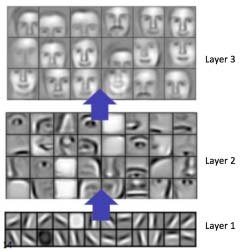I'm new to DL and I'm working on VAE for biomedical images. I need to extract relevant features from ct scan. So I created first an autoencoder and after a VAE. My doubt is that I don't know from which layer I can extract feautures. My personal idea is to use features extracted by layers that compute the mean and variance (before reparameterization trick), but I think that also the layer before these is suitable for the purpose. I left here code of the encoder part:
class Sampling(tf.keras.layers.Layer):
"""Uses (z_mean, z_log_var) to sample z, the vector encoding a digit."""
def call(self, inputs):
z_mean, z_log_var = inputs
batch = tf.shape(z_mean)[0]
dim = tf.shape(z_mean)[1]
epsilon = tf.keras.backend.random_normal(shape=(batch, dim))
return z_mean + tf.exp(0.5 * z_log_var) * epsilon
def Encoder():
inp = tf.keras.Input(shape=(32,256,256,1)) # prima era 64
#enc = tf.keras.layers.Conv3D(8, (2,2,2), activation = 'relu', padding = 'same')(inp)
#enc = tf.keras.layers.MaxPooling3D((2,2,2), padding = 'same')(enc)
enc = tf.keras.layers.Conv3D(16, (2,2,2), activation = 'relu', padding = 'same')(inp)
enc = tf.keras.layers.MaxPooling3D((2,2,2), padding = 'same')(enc)
enc = tf.keras.layers.Conv3D(32, (2,2,2), activation = 'relu', padding = 'same')(enc)
enc = tf.keras.layers.MaxPooling3D((2,2,2), padding = 'same')(enc)
enc = tf.keras.layers.Conv3D(64, (2,2,2), activation = 'relu', padding = 'same')(enc)
enc = tf.keras.layers.MaxPooling3D((2,2,2), padding = 'same') (enc)
enc = tf.keras.layers.Conv3D(32, (2,2,2), activation = 'relu', padding = 'same')(enc)
enc = tf.keras.layers.MaxPooling3D((2,2,2), padding = 'same') (enc)
#enc = tf.keras.layers.Flatten()(enc)
enc = tf.keras.layers.Conv3D(16, (2,2,2), activation = 'relu', padding = 'same')(enc)
enc = tf.keras.layers.MaxPooling3D((2,2,2), padding = 'same') (enc)
'''
# conv 2D
code = tf.keras.layers.Reshape((8,8,96)) (enc)
code = tf.keras.layers.Conv2D(96,(2,2), activation = 'relu', padding = 'same')(code)
code = tf.keras.layers.MaxPooling2D((2,2), padding = 'same') (code)
'''
# latentent code vae
latent_code = tf.keras.layers.Flatten()(enc)
latent_code = tf.keras.layers.Dense(256, activation='relu')(latent_code)
latent_mu = tf.keras.layers.Dense(32, activation='relu')(latent_code) # èprima era 10
latent_sigma = tf.keras.layers.Dense(32, activation='relu')(latent_code) # prima era 10
# Reparameterization trick
#z = tf.keras.layers.Lambda(sample_z, output_shape=(128,), name='z')([latent_mu, latent_sigma])
z = Sampling()([latent_mu, latent_sigma])
encoder = tf.keras.Model(inp, [latent_mu, latent_sigma, z ], name = 'encoder')
#encoder = tf.keras.Model(inp, enc)#[latent_mu, latent_sigma, z ], name = 'encoder')
return encoder
```


